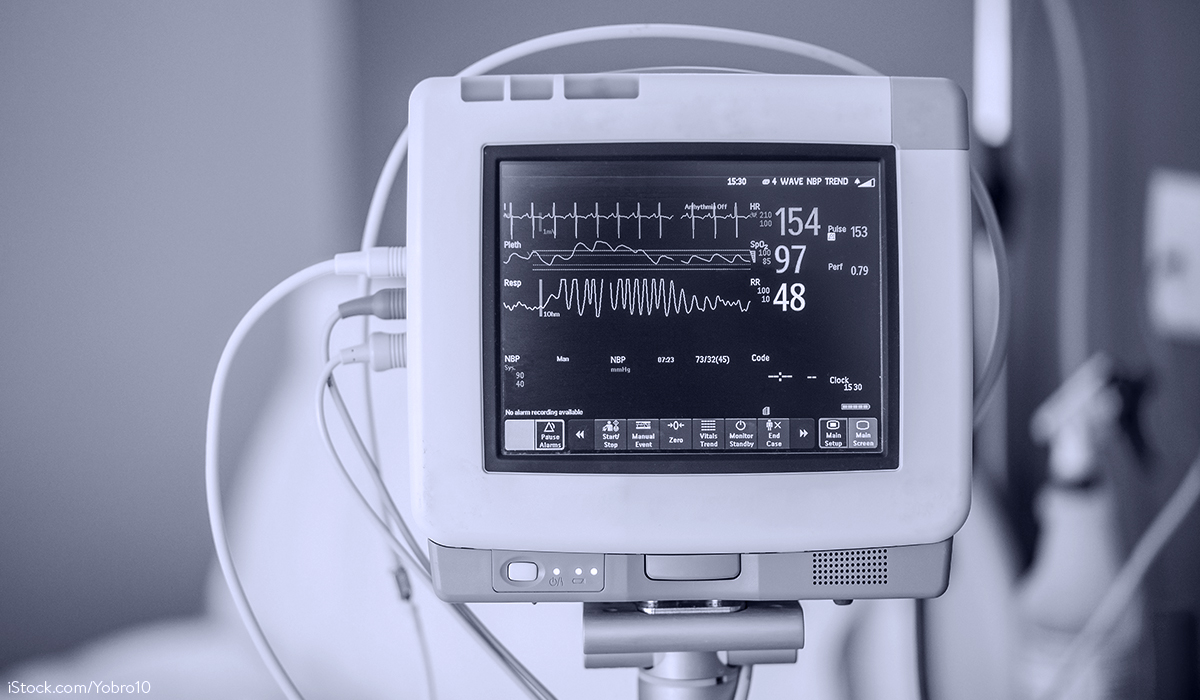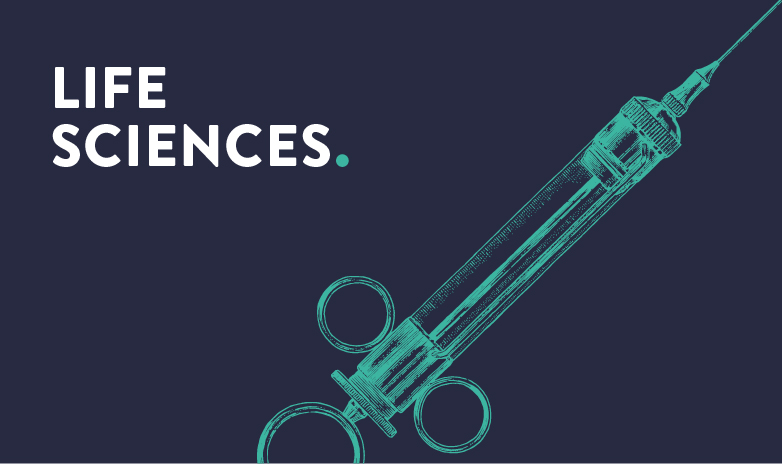Regulation (EU) 2023/607 of the European Parliament and of the Council of 15 March 2023 amending Regulations (EU) 2017/745 and (EU) 2017/746 as regards the transitional provisions for certain medical devices and in vitro diagnostic medical devices entered into force upon its publication in the Official Journal of the European Union on 20.03.2023. The Amendment Regulation (hereinafter also referred to as the 2nd Amendment) is – to use a medical term – an emergency legislative operation on the European legal framework in order to cushion supply bottlenecks in the healthcare system with important medical devices that have long been foreseeable. For business practice, this 2nd amendment means: manufacturers of “legacy products” with “old” certificates under directives 90/385/EEC (“AIMDD”) and 93/42 EEC (“MDD”) of classes Is, Im, IIa, IIb and III as well as such products that are classified higher under the MDR (new class Ir, regularly also medical software!) must review their market access strategy and, if necessary, adapt it to the new deadlines. In doing so, a number of requirements must be observed in order to actually benefit from the extended transition periods. And, to put it straight: “Pure” Class I products, which are also not higher classified under the MDR, are not affected by the now extended transition periods. These must continue to be MDR-compliant when placed on the market since 26.05.2021.
In this blog post, we explain the background and effects of the amended transitional provisions for medical devices. The cross-references to possible acquiescence constructions in the context of market surveillance according to Art. 97 MDR are also significant for practice.
A. Background
The Medical Devices Regulation (EU) 2017/745 (“MDR”) has been in force since 26.05.2021. According to the previously applicable version of Art. 120 para. 2 MDR, the “legacy” certificates according to the AIMDD/MDD Directives would become invalid on 27.05.2024 at the latest. The so-called legacy devices concerned, which still meet the requirements of the previous directive law, would no longer be allowed to be placed on the market by then at the latest, according to Art. 120 para. 3 MDR. According to evaluations by the European Commission, under these circumstances more than 21,000 legacy certificates would become invalid under the previous directive law between January 2023 and May 2024 alone. Numerous manufacturers fail in their efforts to issue new certificates according to MDR in time due to the already arithmetically insufficient capacities of the notified bodies.
In order to remedy this situation, the European Commission presented a proposal for a further extension of the transitional periods of the MDR on 06.01.2023. The imminent risk of significant shortages of medical devices and thus a shortfall in public health were reason enough for both the European Parliament and the Council of the European Union to adopt the proposed regulation unchanged in the fast-track procedure.
B. Essential Regulatory Content
The amending Regulation (EU) 2023/607 (recital (5)) aims to extend the validity of certificates issued in accordance with AIMDD and MDD in light of reports from healthcare professionals of imminent shortages of medical devices and, at the same time, to extend the transitional period during which devices complying with these directives can be lawfully placed on the market. The extension aims to ensure a high level of public health protection, including patient safety and an avoidance of shortages of medical devices needed for the smooth functioning of healthcare services, without lowering current quality or safety requirements. In order to achieve the aforementioned goal, the transitional provisions namely in Article 120 para. 2, para. 3, para. 4, and Articles 122 and 123 of the MDR have been significantly amended.
In detail, this results in the following important changes:
I. Extension of the validity of certificates – amendment of Art. 120 para. 2 subpara. 2 MDR
The extension of the validity of certificates according to Art. 120 para. 2 subpara. 2 p. 1 MDR applies equally to “legacy devices” (under 1.) and products with already expired certificates (under 2.).
1. „Legacy Devices“
According to the new version of Art. 120 para. 2 subpara. 2 p. 1 MDR, certificates issued by notified nodies
- from 25.05.2017 in accordance with Directives 90/385/EEC and 93/42/EEC,
- which were still valid on 26.05.2021, and
- that have not been withdrawn afterwards
shall remain valid after the end of the period indicated on the certificate until the date set out in the Amendment Regulation with the introduction of paragraph 3a for the relevant risk class of the devices.
This provision thus addresses so-called legacy devices, which, according to the old version of Article 120 para. 3 MDR, could still have been placed on the market under certain conditions in accordance with the requirements of the old directive law until 26.05.2024 at the latest.
2. Devices with already expired certificates
According to p. 2 of the amended Art. 120 para. 2 subpara. 2 MDR, the extended period of validity shall furthermore also apply to certificates which
- were issued by notified bodies in accordance with the aforementioned directives from 25.05.2017,
- were still valid on 26.05.2021 and
- that have expired before 20.03.2023.
However, the validity of the extended period are applicable only if one oft he following conditions is fulfilled: The manufacturer and a notified body have signed a written agreement for the conformity assessment in respect oft he device covered by the expired certificate or in respect of a device intended to substitute that device before the date of expiry of the certificate. In this regard, the required written agreement shall be in accordance with Section 4.3, second subpara. of Annex VII MDR, according to which the agreement shall specify clear terms and conditions and contain obligations that enable the notified body to act in accordance with the requirements of this Regulation.
Alternatively, the new transitional periods for devices with already expired certificates also apply in case no such contract has been signed, if a competent authority of a Member State has granted a derogation from the applicable conformity assessment procedure according to Article 59 para. 1 MDR or has required the manufacturer in accordance with Art. 97 para. 1 MDR to carry out the applicable conformity assessment procedure. In practice, the latter alternative is likely to be particularly relevant, as special authorizations under Art. 59 MDR are only granted under the very narrow condition that urgent medical need cannot be met otherwise and that, from a health protection perspective, the completion of a regular conformity assessment procedure cannot be awaited.
II. New transition periods – amendment of Art. 120 para. 3 MDR
The aforementioned transition periods have been staggered according to the risk class of the devices as planned, i.e. until December 2027 for higher risk devices and until December 2028 for medium and lower risk devices. With this risk-based approach, the Union legislator aims to create a compromise between the available capacity of notified bodies and the precautionary level of manufacturers on the one hand, and a high level of protection for public health on the other.
Specifically, the amending regulation under Article 120 para. 3a and 3b MDR provides for the following:
- The validity of the certificates for all class III devices and for class IIb implantable devices except sutures, staples, dental fillings, dental braces, tooth crowns, screws, wedges, plates, wires, pins, clips and connectors, will be extended by three years and will therefore be valid until 31.12.2027.
- For the remaining class IIb devices, class IIa devices and class I devices placed on the market in a sterile condition (class Is) or with a measuring function (class Im), a transition period is to apply until 31.12.2028.
- The transition period, which has been extended to Dec. 31, 2028, is also intended to benefit all products classified higher under the MDR that will require a notified body for the first time in the future; in practice, this particularly affects reusable surgical instruments (class Ir), material medical devices and regularly also medical software.
The extensions stipulated by the amending regulation are directly applicable. Consequently, the notified bodies are not obliged to change the date on the individual certificates.
III. Cumulative conditions for the application of the extended transition period – amendment of Art. 120 para. 3 MDR
However, the aforementioned transition periods do not apply without further ado. Rather, according to recital (6) of the Amendment Regulation, the application of the extended transition period is subject to certain conditions to ensure that that only devices that are safe and for which the manufacturers have taken certain steps to transition towards compliance with MDR will benefit from the additional time. Accordingly, the following cumulative conditions must be met under the new version of Art. 120 para. 3c lit. a–e MDR for manufacturers to benefit from the longer periods:
- those devices continue to comply with Directive 90/385/EEC or Directive 93/42/EEC, as applicable;
- there are no significant changes in the design and intended purpose;
- the devices do not present an unacceptable risk to the health or safety of the patient, user or other persons, or to other aspects of the protection of public health;
- no later than 26.05.2024, the manufacturer has put in place a quality management system in accordance with Art. 10 para. 9 MDR;
- no later than 26.05.2024, the manufacturer or the authorized representative has lodged a formal application with a notified body in accordance with Section 4.3, first subpara., of Annex VII for conformity assessment in respect of a device referred to in para. 3a or 3b of this Article or in respect of a device intended to substitute that device, and, no later than 26.09.2024, the notified body and the manufacturer have signed a written agreement in accordance with Section 4.3, second subpara., of Annex VII.
A closer look at this listing in Art. 120 para. 3c MDR reveals that it essentially maps the requirements that the MDCG established in its guideline 2022-18 for the application of Art. 97 MDR to legacy devices. The guideline addresses devices for which the AIMDD/MDD certificate expires before an MDR certificate can or could be issued due to capacity problems of the notified bodies and lists almost identical conditions for obtaining a so-called toleration order. In particular, the condition that products must not pose an unacceptable risk to health or safety (Art. 120 para. 3c lit. c MDR) is identical in wording to the wording in Art. 97 para. 1 MDR.
Based on its wording, both MDCG guideline 2022-18 and MDCG guideline 2020-3 on the existence of substantial changes in the design and intended purpose of medical devices can be used as interpretive aids to the new version of Art. 120para. 3c MDR. For the latter guideline, one can also expect a timely revision, which may also lead to a certain expansion of the criteria for when a “significant change” in the design and intended purpose of a device is to be assumed.
IV. Special case of custom-made implantable devices of class III
In contrast to the AIMDD/MDD guidelines, the MDR requires the involvement of a notified body in the conformity assessment of class III custom-made implantable devices. Thus, manufacturers of class III custom-made implantable devices must comply with all applicable requirements of the MDR as of 26.05.2021. Against this background, the 2nd Amendment provides a special provision for such devices, which gives the affected manufacturers more time to obtain certification by a notified body.
Therefore, according to the new version of Art. 120 para. 3 lit. f MDR, they can be placed on the market or put into service without a certificate until 26.05.2026, provided that the manufacturer or his authorized representative has lodged a formal application with notified body for a conformity assessment in accordance with Annex VII Section 4.3 subpara. 1 MDR no later than 26.05.2024 and the manufacturer and the notified body sign a written agreement in accordance with Annex VII Section 4.3 subpara. 2 MDR no later than 26.09.2024.
IV. Deletion of the “sell-off“ period – amendment of Art. 120 para. 4 MDR
In addition to the extended transition period, the new version of Art. 120 para. 4 MDR also deletes the sell-off period, which was originally set to expire on 27.05.2025, without replacement, as proposed by the European Commission. This is intended to prevent unnecessary disposal of safe medical devices that are already on the market but not yet with the end user. In order to achieve synchronization, Art. 2 of the amending regulation also provides for the deletion of the sell-off deadline in Art. 110 para. 4 of the Regulation on In Vitro Diagnostic Medical Devices (EU) 2017/746 at this point.
This means a significant relief for practice, namely for distributors: “Old” devices that have either already been placed on the market before 26.05.2021 or as legacy devices under the new transitional provisions may now continue to be made available on the market and put into service in the supply chain without any time limit – subject, of course, to the “shelf life” specified by the manufacturer. Incidentally, this innovation also applies to class I devices that were placed on the market before 26.05.2021 and are still in the supply chain.
C. Relationship of the new transitional periods to the acquiescence order according to Art. 97 MDR
Until now, manufacturers had the option of leaving a product on the European market even without MDR certification by obtaining an acquiescence order under Art. 97 MDR. Last December, as mentioned above, the MDCG published its position paper MDCG 2022-18, which outlines a consistent approach for competent authorities to apply market surveillance measures to bridge the gap between the expiration of certificates under the AIMDD/MDD-Directives and the issuance of certificates under the MDR. However, according to the MDCG as well as the European Commission, this approach should only be a temporary measure.
With the introduction of the new transitional period, the question therefore arises whether and, if so, how the previous solution approach will continue to be applied to bridge the bottlenecks in the medical device market.
I. Legacy Devices
The relationship of the new transitional periods for legacy devices to the acquiescence order according to Art. 97 MDR is – also in the opinion of the EU Commission – clear: With the entry into force of the new transitional periods, any applications according to Art. 97 MDR for legacy devices to bridge the gap between the expiry of the certificates according to the old Directives and the issuance of certificates according to the MDR will become obsolete in the future.
II. Devices with already expired certificates
It is more difficult to determine the relationship between the new transitional periods and the acquiescence order according to Art. 97 MDR for devices with already expired certificates. A first point of reference for this is the new version of Art. 120 para. 2 MDR, according to which the new transitional periods for products with already expired certificates apply if a competent authority has requested the manufacturer to carry out the applicable conformity assessment procedure in accordance with Art. 97 para. 1 MDR. This means that the manufacturer must have eliminated the nonconformity by carrying out the relevant conformity assessment procedure by a date set by the authority at its discretion.
However, the interplay here is not clear, especially for cases in which the deadline set by the authority for the elimination of the nonconformity expires at an earlier point in time than the new transitional period applicable in the individual case. This is because it remains largely open whether the manufacturer in this constellation can eliminate the non-conformity until the expiry of the extended transitional periods applicable to him or whether, on the contrary, the period set by the authorities is decisive.
Consequently, the competent authority according to Art. 97 para. 1 MDR would have to set the deadline for the elimination of the non-conformity in the light of the new transitional periods, so that a synchronization can be established. This is also supported by the fact that Art. 120 para. 3c MDR contains identical requirements as the MDCG guideline on the application of Art. 97 MDR to legacy devices.
Finally, the question also arises as to who is responsible for monitoring the devices in these cases. According to Art. 120 para. 3e MDR, it is still the notified body that also issued the legacy certificate as soon as the extended transitional periods apply to the product concerned, whereas this task is performed by the Competent Authority according to Art. 97 para. 1 MDR for devices with expired certificates as soon as the non-compliance becomes known. Here, too, in the interests of consistent handling, the notified body would have to continue to be responsible for monitoring as soon as the requirements of Art. 120 para. 2 subpara. 2 MDR are fulfilled.
D. Remaining legal uncertainties and additional documents to the Amendment Regulation
In order to prevent the aforementioned and future legal uncertainties and inconsistencies, one can expect the publication of a Q&A document on the Amendment Regulation at European level in the near future. It would be desirable if this document, in addition to the relationship of the transitional periods to Art. 97 MDR, also contains information on the planned priority relationship between the MDR certificates that expire in the same period and the old certificates whose validity is being extended. In any case, it is already clear that there will be a temporal overlap between the new transition periods and the expiration date of MDR-certified medical devices from 2021 – especially since the processing time per MDR certificate is in no case less than one year, according to the European Commission.
Legal uncertainties also exist with regard to the form of the contract between the manufacturer and the notified body in accordance with Annex VII Section 4.3 Subsection 2 MDR. It is clear that manufacturers must plan a period of time in advance for the agreement, as a subsequent conclusion of the contract is not sufficient to benefit from the new transition periods. However, it remains unclear to what extent the commitment of the notified bodies must be available and how this will be structured in detail.
In addition, as mentioned above, a revision of the MDCG 2020-3 guideline can be expected in the course of the amending regulation. Under certain circumstances, the MDCG could make a correction to the effect that manufacturers no longer have to technically freeze their medical devices in the event of certain changes in design and intended use in order to benefit from the extended transition periods. This would allow products that require constant further development and optimization in the field to continue to be placed on the market. In any case, this correction would take into account the overriding objective of the MDR to promote innovation (recital (1) of the MDR) and enable manufacturers to make technical improvements to their products despite the transition periods.
E. Postponed is not abandoned – Conclusion and outlook
The new transition periods are intended to ensure that manufacturers and notified bodies have more time to complete conformity assessment procedures for legacy devices under the MDR while maintaining patient access to a broad range of medical devices. However, extending transition periods only addresses the symptom, not the cause itself. This conclusion was also reached by the Federal Council of Germany in its 1031st session on 03.03.2023 (printed matter 27/23), which believes that the amending regulation will continue to create structural problems in the implementation of the MDR for economic operators in the EU.
Despite the time leeway created with the extension of the transition periods for the actors in the medical device sector, the cause is still primarily to be seen in the fact that the overall capacity of the notified bodies responsible for conformity assessment is insufficient to fulfill their tasks.
For the future, the focus of further legislative measures – as already detailed in the MDCG 2022-14 position paper of the Medical Devices Coordination Group – is likely to be on improving the capacities of notified bodies. The Federal Council sees a further solution in implementing special solutions for niche and existing devicess along the lines of the FDA and carrying out the evaluation of the MDR in accordance with Art. 121 MDR well before 27.05.2027 in order to continue to identify and remedy existing weaknesses at an early stage. Incidentally, it is to be hoped that as many manufacturers as possible will be sufficiently prepared by the end of the new transition period to meet the more stringent requirements of the MDR and thereby prevent bottlenecks in the supply of medical devices.
You can find out yourself which new transition periods apply to your product very easily and with just a few clicks using our transition period calculator (available in German).
Do you have any questions about this news, or would you like to discuss it with the author? Please contact: Dr. Boris Handorn and Dr. Zeynep Schreitmüller







